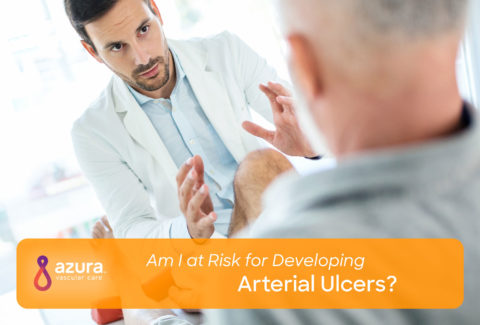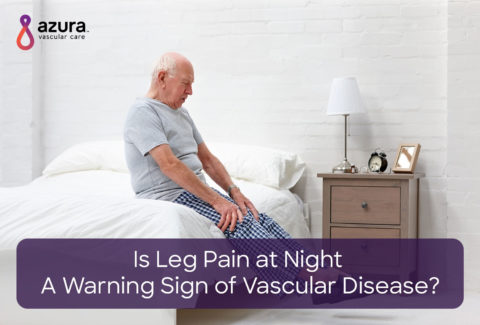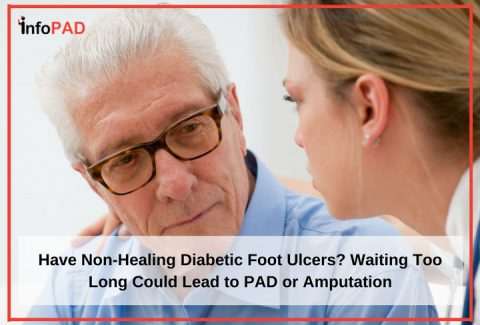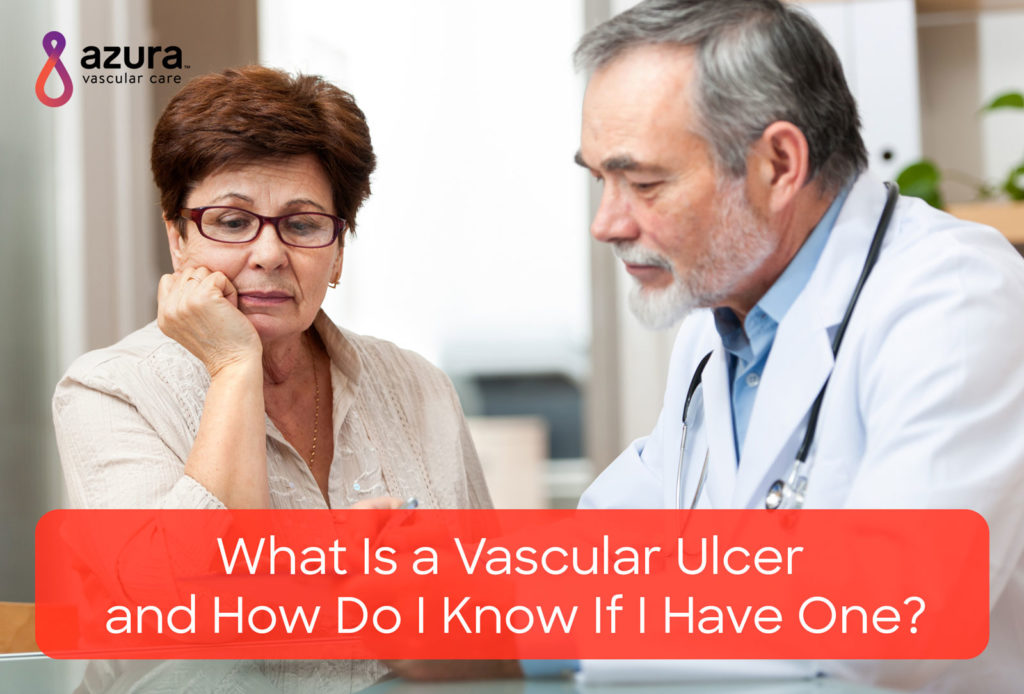
Vascular ulcers are chronic, or long term, breaches in the skin caused by problems with the vascular system, also known as the circulatory system.
Vascular ulcers have the potential to be dangerous. They may not heal normally and can lead to an increased risk of infection. Due to related medical problems, patients with vascular ulcers may have little or no sensation in the ulcer area. Therefore, you may not notice a vascular ulcer until it has progressed to the point of becoming large and/or infected.
Types of Vascular Ulcers
The two major types of vascular ulcers are venous ulcers and arterial ulcers. Both types of these ulcers can originate from wounds or sustained pressure.
- Venous ulcers are associated with problems with your veins and most commonly appear in your lower legs and ankles. They are sometimes called stasis or varicose ulcers. About 80 percent of leg ulcers are venous ulcers.i
- Arterial, or ischemic, ulcers are due to issues with the arteries that limit the supply of blood to the legs. These issues may be fat blockages in the arteries, diabetes and/or certain infections.iii
8 Signs of Vascular Ulcers
If you have diabetes, venous insufficiency, peripheral artery disease (PAD), varicose veins or other risk factors for vascular ulcers, watch out for the following signs:
Venous Ulcers
1. Uneven, Irregular Appearance
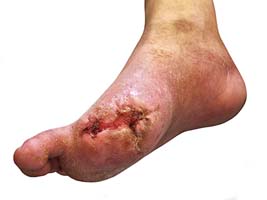
Venous ulcers rarely have a uniform, completely circular appearance. Instead, they are usually irregular, with varying depths within the ulcer.i
2. Large and Deep
Although they may start out small, venous ulcers can grow significantly in size, especially if left untreated. In addition, many venous ulcers are deep, penetrating completely through the skin and down to the bone.i
3. Often Found Over Bony Prominences
Venous ulcers often begin on a bony prominence, or an area where bone is near the skin.ii Think of your ankles, hips and knees as examples.
4. Exudative
The majority of venous ulcers are what doctors call exudative.i This means they produce fluid. The fluid may be pus, or it could be clear or reddish-brown in appearance. The fluid may have a foul odor.
5. Painful
Venous ulcers are frequently painful.i You should remember that many patients with venous ulcers also have decreased sensation in their legs, meaning it may be difficult to know an ulcer is there unless it’s in a visible area. Without regular visual checks, you may not notice a venous ulcer right away.
Arterial Ulcers
6. “Punched Out” Appearance
Arterial ulcers quite often exhibit a “punched out” appearance, like a wound that has been gouged into your leg.i,iv These ulcers differ from venous ulcers in that the borders of an arterial ulcer are usually regular, smooth, sharp and well-defined, rather than a gradual transition from healthy skin to ulcer.iv
7. Surrounding Redness and Shininess
The skin surrounding an arterial ulcer may have a reddened appearance. It may also feel cool to the touch and lack normal amounts of hair. This skin often has a “shiny” look to it.iii
8. Gangrene
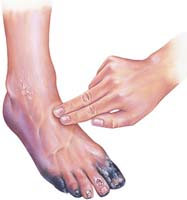
Some cases of vascular ulcers can result in gangrene, tissue that has died from a lack of blood supply and other nutrients. The gangrene may appear as dry, flaking skin of a purple to black color. Pus may be present if the gangrene is associated with infection.iv
RELATED: 5 Reasons Why You Have Developed a Non-Healing Foot Ulcer
If you’re still wondering ‘what is a vascular ulcer?’, or if you have any of the above signs of either arterial or venous ulcers, you should seek medical attention immediately. The sooner you receive treatment for your ulcer, the less the risk of infection and other complications. The consequences of untreated vascular ulcers can be dire and include widespread, systemic infection, toe or foot loss and even limb amputation. Talk to your doctor today.
Sources:
i Bongiovanni, C.M. “WOUNDS: How to Distinguish Arterial, Venous and Other Ulcers.” NCVH 16th Annual Conference, 2015.
https://www.ncvh.org/pdf/2015%20NCVH/5-27-Wed/Nurse-Cath/Nursing/1445_Bongiovanni.pdf
ii Collins, L., Seraj, S. “Diagnosis and Treatment of Venous Ulcers.” American Family Physician, 2010. 81(8):p. 989-996. http://www.aafp.org/afp/2010/0415/p989.html
iii Grey, J.E., Harding, K.G., Enoch, S. “Venous and arterial leg ulcers.” The BMJ, 2006. 332(7537):p. 347-350. https://www.ncbi.nlm.nih.gov/pmc/articles/PMC1363917/
iv Hess, C.T. “Arterial Ulcer Checklist.” Adv Skin Wound Care, 2010. 23(9):p. 432.
http://journals.lww.com/aswcjournal/Fulltext/2010/09000/Arterial_Ulcer_Checklist.11.aspx
